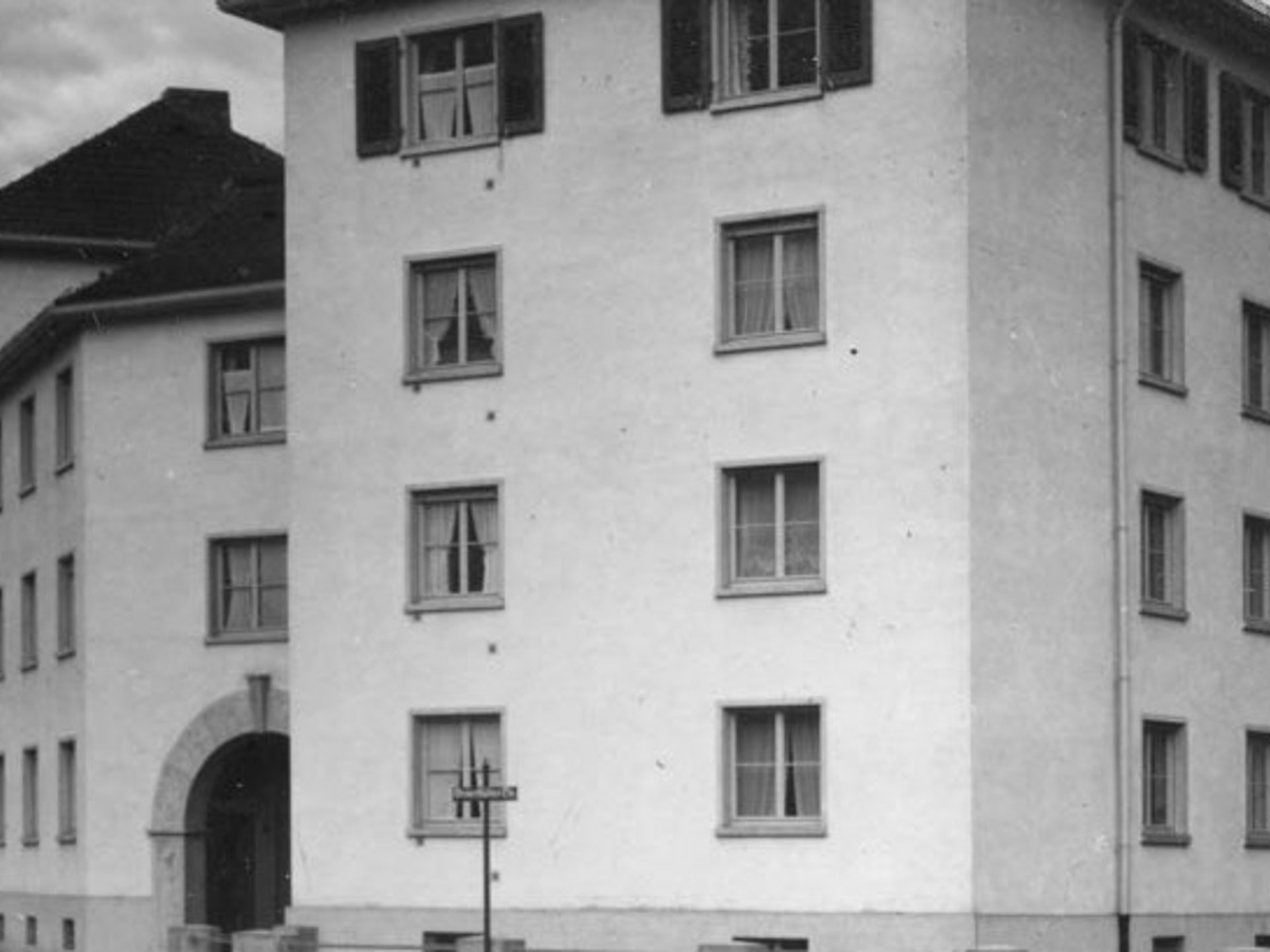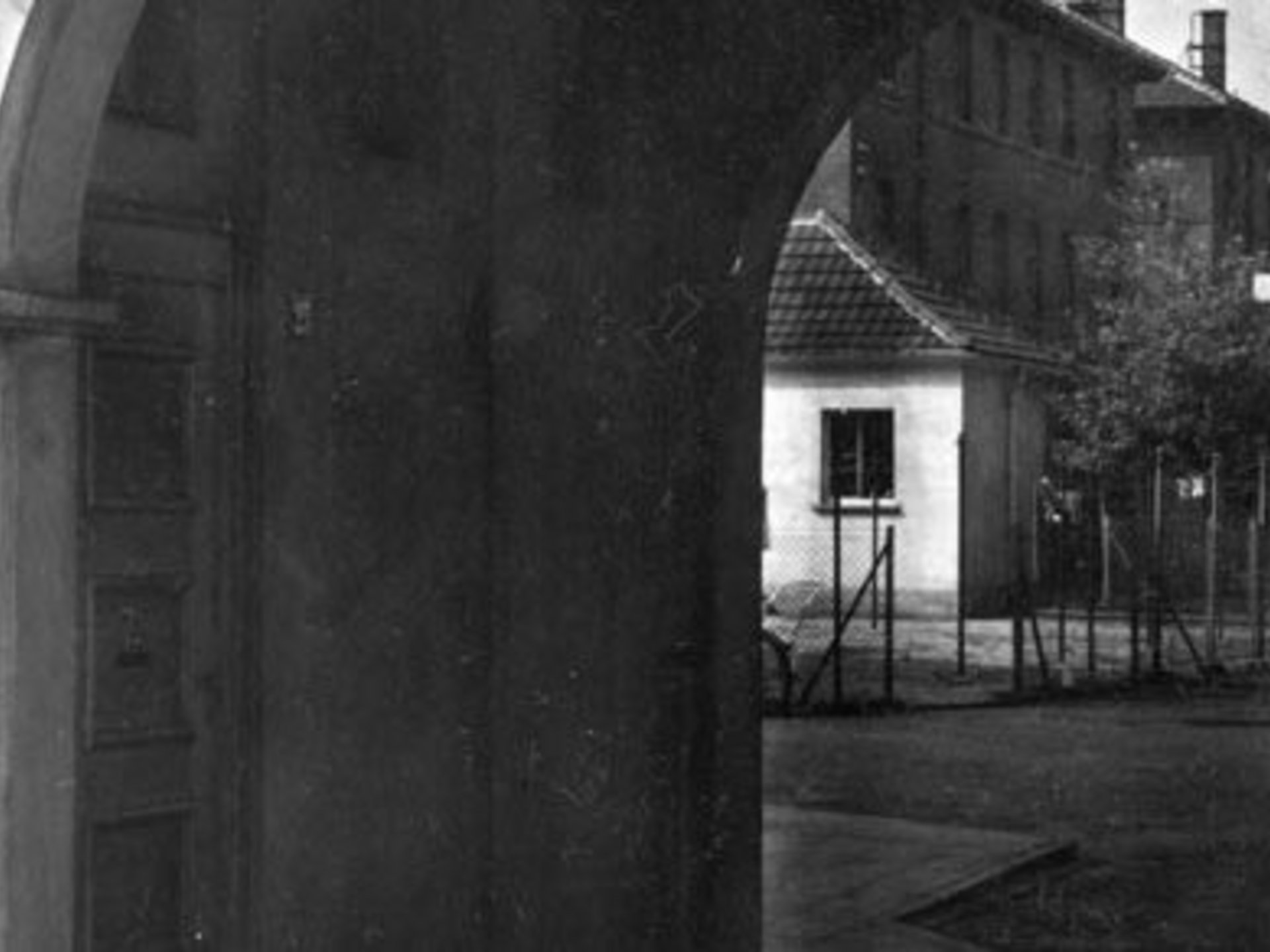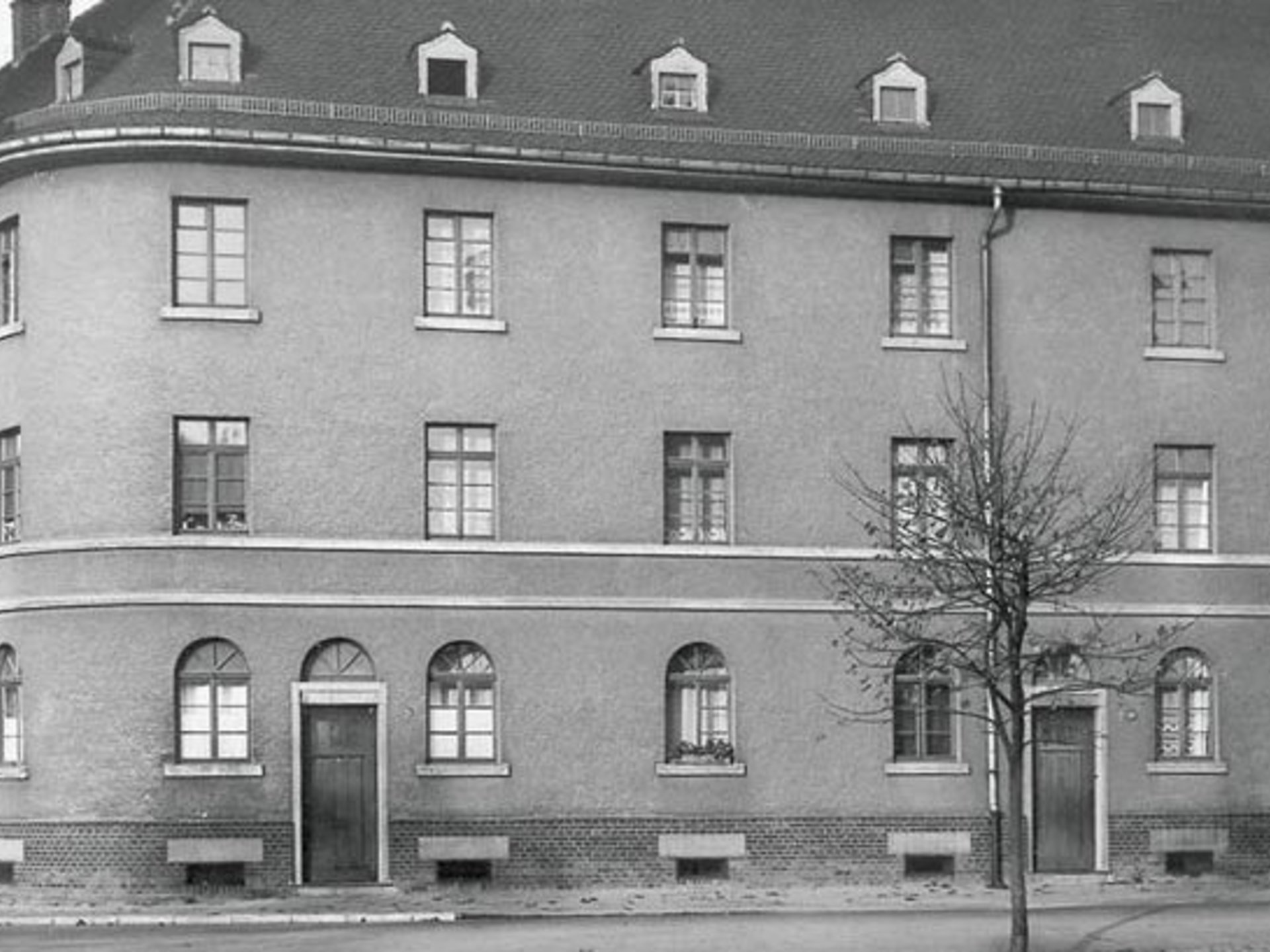124 flats around 1900
Around 1900, the Bauverein created 124 new flats for workers. Until 1919, the entire building stock was limited to the industrial area in the north-west of Darmstadt.
First tenant statistics published
The first tenant statistics published in 1908 reveal who lived in a Bauverein flat and for how long. 529 people, including 315 children, lived in the now total of 123 flats with an average rental period of nine years. That was an average of 4.3 people per flat, which was quite common at the time.
Generational change in management bodies
Before the First World War, there is a generational change in the management bodies. Several descendants of the founding generation join the Management Board and the Supervisory Board. In 1913, Dr Alexander Bopp, Hugo Brink and Philipp Roeder become members of the Management Board.
Association statutes turn 50
In 1916, the approval of the first association statutes 50 years ago is commemorated. However, the anniversary falls during the First World War, which is why no celebrations are held. It is not until the 75th anniversary that the date of the first meeting on 6 October 1964 is set as the founding date.
Victims of war in their own ranks
There were also casualties in the ranks of the Bauverein during the First World War (1914-1918). A total of eight tenants, the Management Board member Alexander Bopp and a member of the Supervisory Board were killed in the first years of the war.
Three new apartment blocks
Even during the war, further houses were being planned due to the great housing shortage. Three new apartment blocks at Weiterstädter Strasse 19 and 21 and Feldbergstrasse 89 are ready for occupancy in June 1920. The Bauverein's building stock now totals 18 properties.



HEGEMAG is founded
In the 1920s, the Hessische Wohnungsfürsorgegesellschaft founded two non-profit housing construction companies in order to drive forward public building activity. One of these is the "Hessische gemeinnützige Aktiengesellschaft für kleine Wohnungen" (HEGEMAG) - founded in 1927 - whose housing stock will be transferred to bauverein AG eight decades later in May 2003.
First business address
The Bauverein für Arbeiterwohnungen had its own business address for the first time from 1924-1933 at Rheinstraße 22, the headquarters of Danat-Bank (Darmstädter und Nationalbank), from whose ranks two members of the Management Board and several members of the Supervisory Board of the Bauverein came.
Cooperation with the city grows
After the First World War, co-operation with the city of Darmstadt grows. In 1925, the city is represented on the board of the building association for the first time by the city official Peter Stein.
City acquires shares from small shareholders
On 7 March 1929, the city takes over almost all of the shares held by the small shareholders. With the acquisition of the shares, the Bauverein für Arbeiterwohnungen becomes a municipal housing association on the initiative of the mayor and head of the building department, August Buxbaum. The municipal property is not transferred to the Bauverein's building stock until 1938.
Corporate purpose reformulated
Following an amendment to the articles of association, the purpose of the organisation since 1931 has been "to build healthy and affordable small flats for families and individuals in suitable locations in and around Darmstadt. The association is authorised to participate in other companies for the promotion of small-scale housing construction."
Synchronisation of the Supervisory Board
The seizure of power by the National Socialists in 1933 has no direct impact on the management, as the Bauverein's Management Board and accountants remain in office. The composition of the Supervisory Board is different: In the course of the Gleichschaltung, both Mayor Friedrich Ritzert and some city councillors from the democratic parties lose their posts. When the "Law on the Gleichschaltung of Supervisory Boards" comes into force (15 July 1933), Otto Kopp, Mayor and Head of the Building Department, is appointed by the city as the new Chairman of the Bauverein's Supervisory Board. Further vacancies are filled by members of the NSDAP. From the Supervisory Board elected before 1933, only former bank director Hugo Brink remains on the board, who allowed himself to be pressurised into NSDAP membership in 1938.
Architects design residential buildings
Well-known Darmstadt architects make their first appearance at the Bauverein with the new construction of six houses at Weiterstädter Strasse 23-31 (now Dolivostrasse) and Feldbergstrasse 76 in 1936: Albin Müller, Sixtus Grossmann and the Olbrich student Jakob Krug.
Housing stock doubled
By 1940, the Bauverein's housing stock had doubled in just a few years to 52 houses with 336 flats. The reasons for this include the construction of 40 non-commissioned officers' flats on behalf of the Wehrmacht and the transfer of the municipal housing stock in 1938.
Construction freeze for civil construction projects
Several planned construction projects had to be cancelled during the Second World War (1939-1945). The general construction freeze for civilian building projects imposed by the General Plenipotentiary for the Construction Industry in 1942 also affects three of the Bauverein's buildings.
War damage after World War II
The destruction caused by the air raids in 1944 does not stop at the Bauverein buildings: nine houses are completely destroyed and several others are damaged. Nevertheless, the war damage for the Bauverein is limited.


